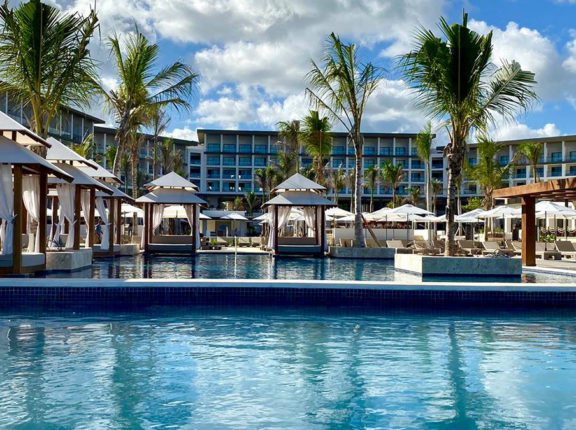By George Nicholson and Rachael Robinson
Op-Ed Contributors
Climate change currently affects the entire globe. According to the Intergovernmental Panel on Climate Change, this global phenomenon “refers to any change in climate over time, whether due to natural variability or as a result of human activity.”
Moreover, the World Meteorological Centre states that fourteen out of the fifteen warmest years ever recorded have occurred since 2000, with 2014 being the hottest year. These changes have largely been driven by human activity, which is disrupting the planet’s natural “greenhouse effect”: a process through which the Earth’s surface is warmed by an atmospheric layer of greenhouse gases that absorb solar energy.
Carbon dioxide accounts for approximately 60% of global greenhouse gas emissions and is mainly released through fossil fuel combustion, a significant component of which is directly related to the transport sector. The global transport sector is responsible for producing approximately 25% of all anthropogenic CO2 emissions; 2% of this is generated by the international aviation industry, which, in 2014, was responsible for producing 688,739,000 tonnes of CO2.
The aviation industry is not only of considerable importance to the Greater Caribbean region due to its insular nature, but also because of the major role that tourism plays in the regional economy.
On a global scale, more than half of all tourist arrivals were made by air, and notwithstanding the region’s premier position as a cruise destination, the majority of the region’s tourists arrive by air. Tourism further accounts for over 12% of total employment in the Caribbean, as well as around 40% of its exports in goods and services with some countries.
Additionally, air trade between the Caribbean and Europe and North America is expected to increase by 3.5% and 1.8% respectively over next two decades. Given the concerns raised worldwide about the role that aviation plays in the generation of greenhouse gases, this has become a critical issue particularly for small island economies which are fully dependent on air transport access, considering that changes within this sector will have a large, disruptive impact on small tourism-based economies.
While the expected continuous growth in regional aviation can be perceived as an additional catalyst of the human-induced greenhouse effect, it is through climate change that the region’s aviation industry has the opportunity to contribute towards building a sustainable future for the Greater Caribbean. In this way, the industry supports the fulfillment of several of the Sustainable Development Goals set out in the United Nations Development Agenda Beyond 2015, particularly Goal 13: to “take urgent action to combat climate change and its impacts.”
Following the 2014 UN Climate Summit, the UN International Civil Aviation Organization (ICAO) collaborated with the Air Transport Action Group on establishing an Aviation Action Plan to be implemented by their various members, including the Latin American and Caribbean Air Transport Association. The main objective of this yet to be finalized action plan is to halve net aviation CO2 emissions by 2050 through several actions, including the creation of a carbon standard for aircraft fuel efficiency and design, alternative sustainable fuel production, strengthening capacity-building within the aviation sector, and achieving the 2013-2028 Global Air Navigation Plan. Activity in the global aviation industry has also aided in developing regional environmentally-friendly aviation initiatives such as Trinidad and Tobago’s Fuel Savings and Emissions Reduction Plan for the Piarco Flight Information Region, inspired by the Convention on International Civil Aviation, and the Central American Action Plan for Emissions Reduction from International Civil Aviation.
While it is certain that actions must be taken in light of the role that aviation plays as a driver of climate change, price-based international climate policy poses an immediate economic risk to regional tourism, as policies designed to mitigate GHG emissions are expected to have a significant suppressing impact on long-haul air travel. The Greater Caribbean, along with other destinations that similarly reliant on long-haul air services to support their tourism industries, has expressed concern for the impact that this will have on vacation travel and tourist arrivals. A case study of Jamaica has revealed the sensitivity of market segments to climate-related price increases in air travel costs, reinforcing the economic implications of reduced growth in tourist arrivals.
Internationally, given the concern regarding climate change, some countries have attempted to reduce aviation emissions by implementing emissions cap schemes such as the European Union’s Emissions Trading System for aviation. These, however, have been met with resistance, considering that emission pricing alone may not reduce emissions significantly without hurting sensitive economies.
The European Union has thus agreed to temporarily suspend its Trading System outside of the EU zone. Resultantly, during its 38th Assembly session held in the fall of 2013, the ICAO agreed on the development of a global market-based measure to curb airline carbon emissions, which will be finalized at the next ICAO Assembly in 2016 and implemented by 2020.
What has likely propelled the rollback in favour of other mechanisms is the fact that emissions from international aviation fall outside the purview of any single country’s jurisdiction, making them a ripe target for trading. Despite the lack of direct, price driven emission reductions, regulating aviation could have considerable indirect mitigation consequences. Emission limits in aviation could be tied to offsets or trading with other sectors, given that reducing aviation emissions through direct pricing may be expensive, and thus the sector could buy cheaper mitigation measures elsewhere through a flexible market mechanism.
One consideration that may be of merit to regional economies is the perspective that the only realistic option for capping aviation emissions in the near future will be through the likely use of carbon offsets. Considering that the aviation sector would probably require a substantial number of offsets to meet the carbon neutrality goal, these must not be considered to be a final solution nor should they pull focus from the drive to mitigate emissions. Nevertheless, one source of offsets appears particularly promising for the tourism-dependent region, which is Reducing Emissions from Deforestation and Forest Degradation (REDD). In light of the level of deforestation in the Greater Caribbean region, if these offsets are forestry-related, there is the possibility of generating substantial biodiversity benefits resulting in gains to tourism as well as aviation.
However, implementing trading schemes is not without its challenges. To date, in spite of some carbon trading schemes such as Guyana REDD+ Investment Fund, Jamaica’s Wigton Windfarm and Eco-Tec, carbon trading has not achieved a significant foothold in the region ostensibly due to country size, development cost and complex methodology.
REDD schemes have struggled to find adequate funding from carbon markets as governance is difficult given specific requirements for monitoring and permanence of these projects. Nonetheless, there are new initiatives that are being considered. For instance, in Costa Rica, the government is offering turists visiting the country the voluntary means to offset their flight’s emissions by contributing to protecting its forests.
Climate change is a new strategic reality for policy and business decision makers within the tourism sector. As new international policy frameworks for managing fuel-related GHG emissions continue to advance, further research will be required to understand the implications for the longer-term risks to tourism development in the Greater Caribbean.
In light of the numerous measures taken to combat climate change at the level of international and regional aviation organizations, mapping a sustainable future of regional climate change resilience requires additional action at a local level.
Public education and awareness campaigns on climate change are vital and must not only highlight the carbon footprint that each air passenger leaves behind, but also underscore the key role that the aviation industry plays as a catalyst of climate change. Technical solutions will eventually be needed to reduce emissions at the source. However, the chance of achieving substantial benefits through the judicious choice of forestry offsets to help meet aviation emissions goals is an opportunity well worth further exploration, especially for tourism driven economies
George Nicholson is the Director of Transport and Disaster Risk Reduction and Rachael Robinson is the Research Assistant of the Directorate of Transport and Disaster Risk Reduction of the Association of Caribbean States.
Note: the opinions expressed in Caribbean Journal Op-Eds are those of the author and do not necessarily reflect the views of the Caribbean Journal.







